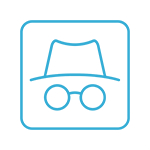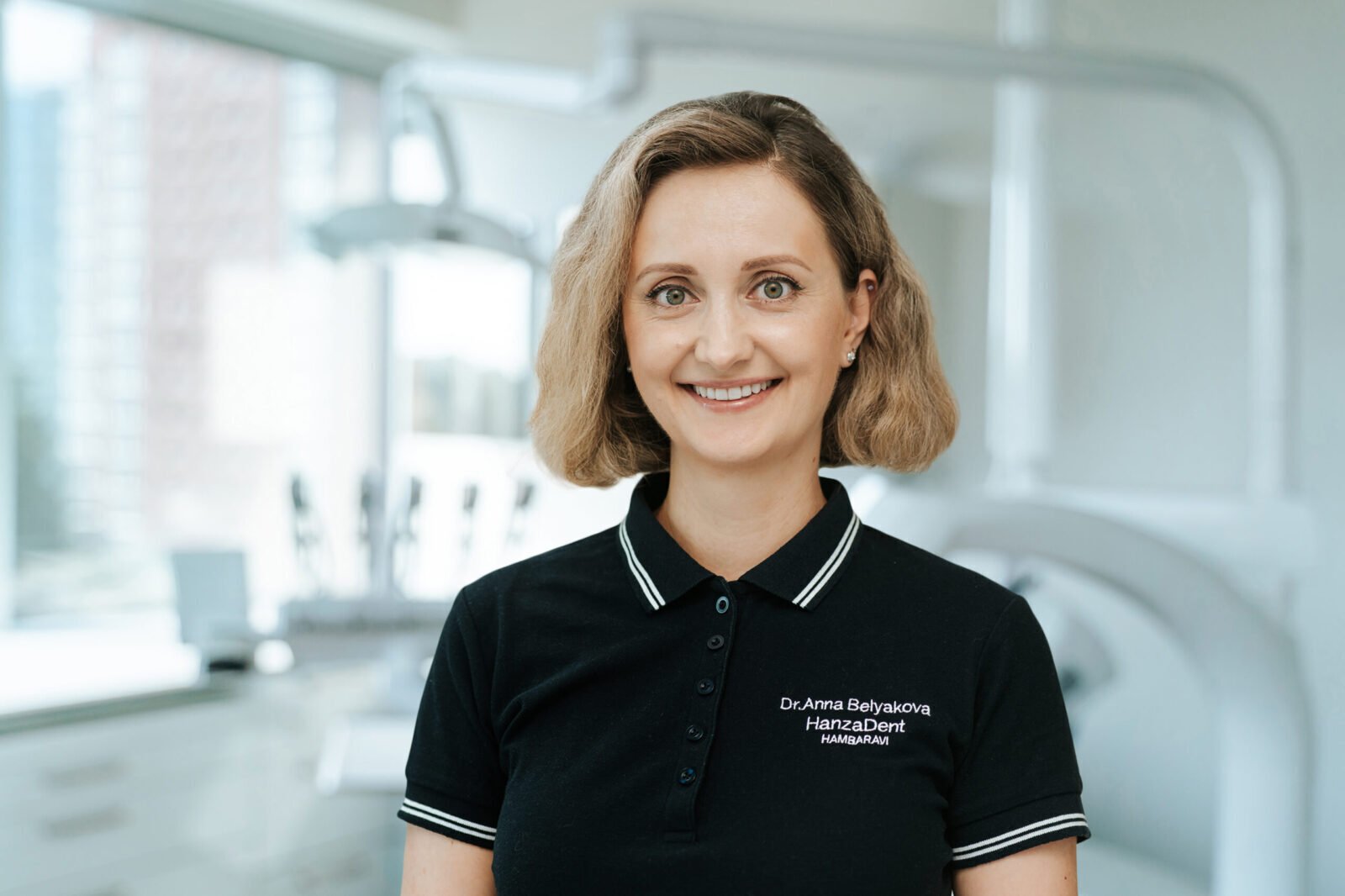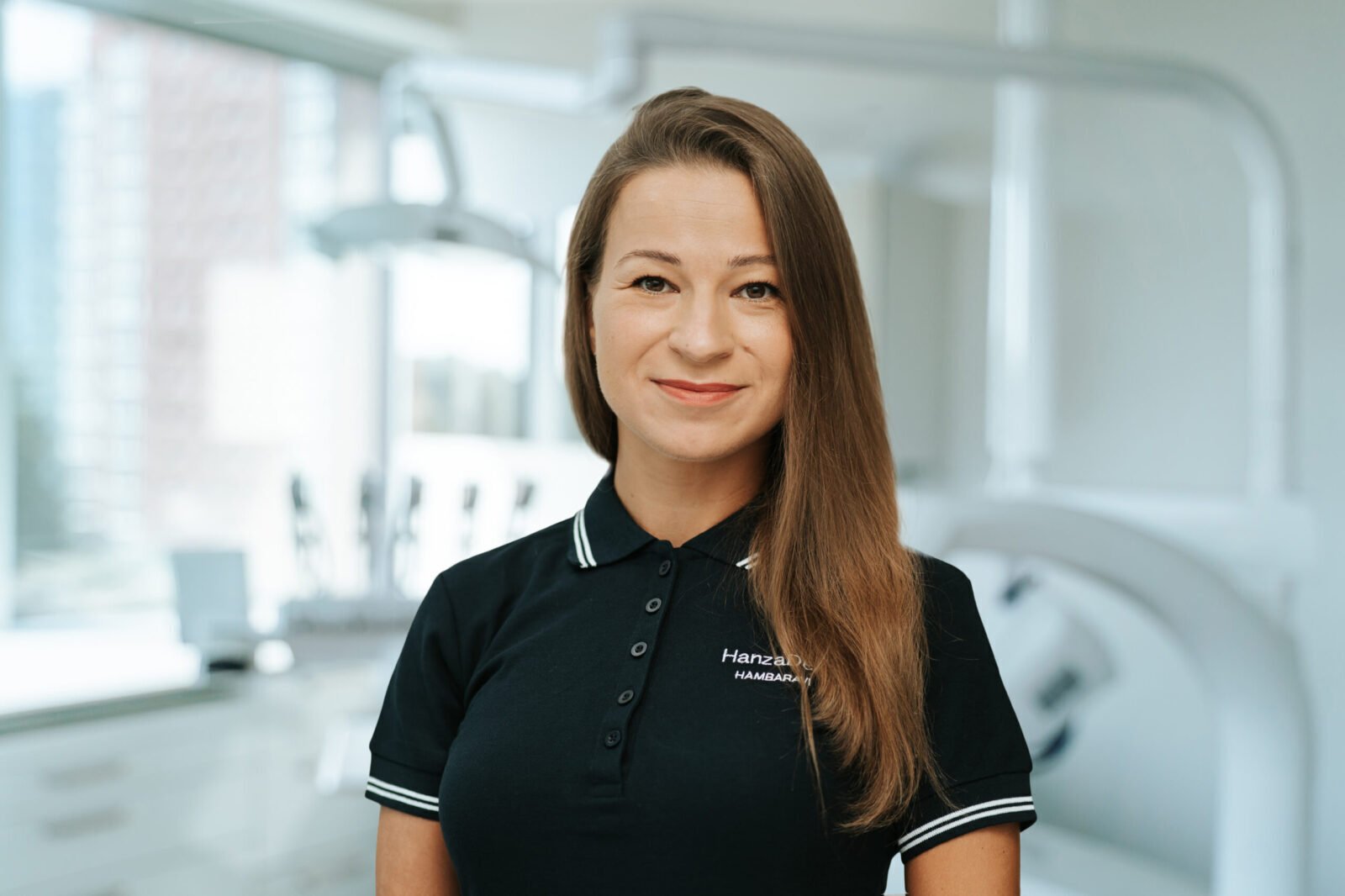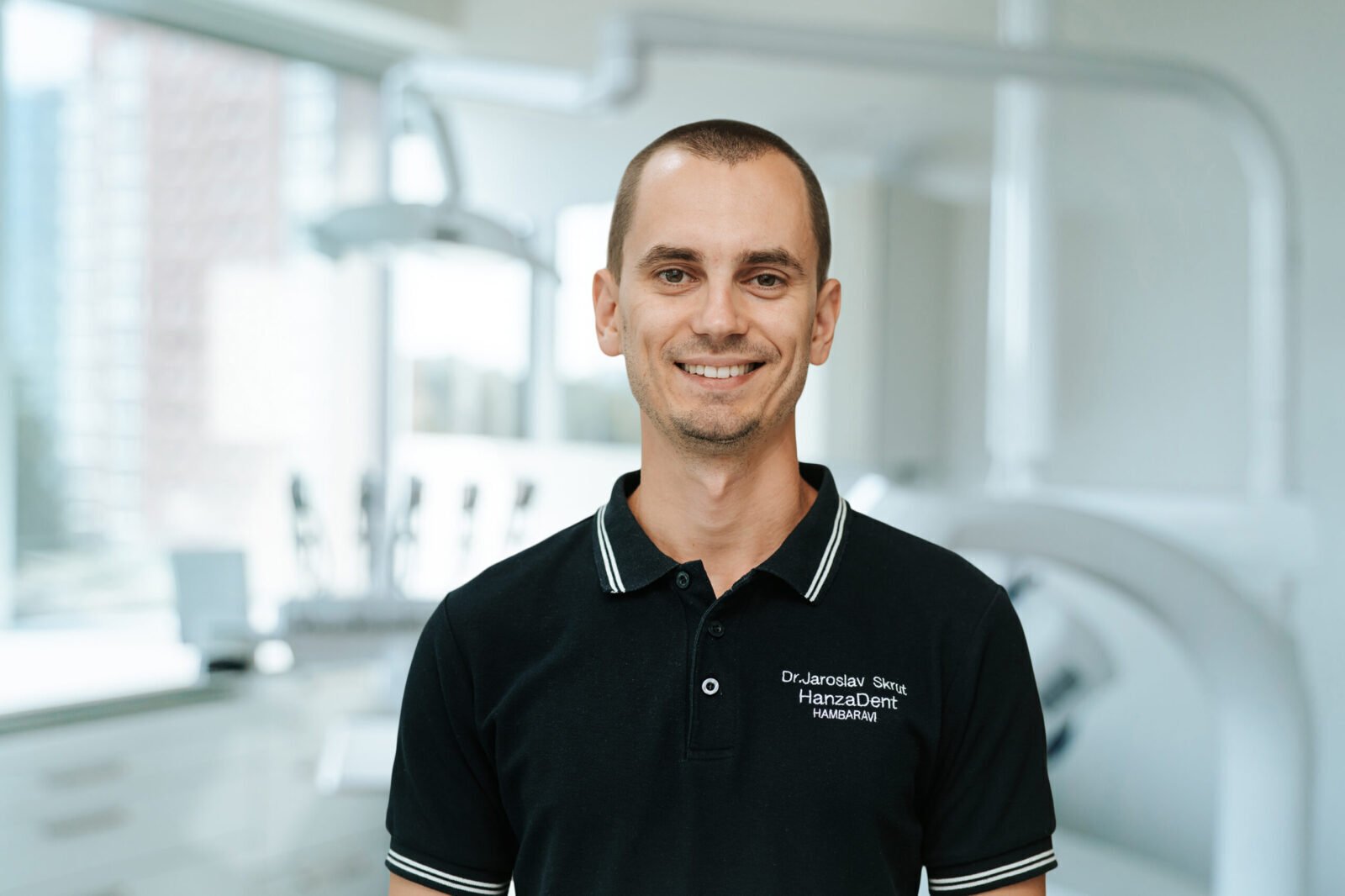
Aligner Treatment
Discreet and effective solution for teeth straightening at HanzaDent! Braces allow you to correct the position of your teeth with transparent and comfortable braces. Find out more and book an appointment today!
Book a visitModern Technology
Best Dentists
Quick and Convenient Booking
What is aligner treatment and why is it necessary?
The dentist, in collaboration with the aligner manufacturer, develops a treatment plan approved by the patient, followed by the production of a personalized set of aligners. Aligners correct the positioning of teeth, improving both aesthetics and oral functionality.
Why Are Aligners Necessary?
- Straightening Teeth – Correct crooked or misaligned teeth.
- Correcting Bite – An improper bite can cause tooth wear, jaw problems, and digestive issues.
- Aesthetics and Confidence – Straight teeth provide a beautiful smile and boost confidence.
- Convenience and Removability – Aligners are easy to remove for eating and cleaning, making them user-friendly.
Aligners suit many patients and are an excellent alternative to traditional braces, offering a discreet and effective solution for teeth alignment. To find out if aligners are the right choice for you, book an appointment with our specialists!
Satisfied clients
47000+

| SERVICE | PRICE |
| Consultation | from 70€ |
| Aligner treatment consultation | from 70€ |
| Aligner treatment diagnostics and treatment plan preparation | 350€ |
| Aligners | 1700-2500€ |
| Aligner treatment return visit | 250-350€ |
How to wear aligners?
- Each aligner is worn for approximately 2 weeks (the duration may vary).
- Aligners must be worn for 22 hours a day.
- Aligners are removed only for teeth cleaning and eating.
- Follow-up visits are scheduled according to the treatment plan.
- In some cases, teeth may not move as planned, requiring adjustments. The dentist may order new aligners and revise the plan.
After treatment, patients are given retention aligners, which must be worn for 1 year to a lifetime, depending on the case. Sometimes, retention wires are attached to the inner side of teeth to prevent shifting.
Post-treatment adjustments to tooth surfaces and bite may be necessary.
Orthodontic Services at HanzaDent
HanzaDent clinics provide certain orthodontic services performed by dentists, not orthodontists, under § 43 Part 2 of the Health Services Organization Act. Dentists work based on their experience and qualifications and refer patients to specialists when needed.
Potential Complications with Aligner and Braces Treatment
Complications from aligner treatment may be similar to those of braces:
- Gum recession;
- Tooth root resorption;
- Tooth sensitivity;
- Enamel damage;
- Oral mucosa ulcers;
- Marginal bone defects;
- Gingivitis;
- Periodontitis flare-ups;
- Pulpitis;
- Temporomandibular joint disorders;
- Difficulty achieving planned results due to unpredictable jaw growth.
Customer reviews
First-class service, truly impressive. I will definitely come back again!

Aleksandr Shmanjov
Dr. Alina Ismailova is very pleasant and professional.

Angelica Tahker
A very polite, professional, and attentive dentist, Dr. Rasmus Peeker!
My previous visits to the dentist were quite painful, especially the removal of a wisdom tooth. However, I went to Dr. Rasmus Peeker, and the wisdom tooth extraction was absolutely painless! Highly recommend!

Nadezda Zdanova
Great dentists who do their job well, both in treatment and consultation. In particular, Dr. Ermel's advice helped me take better care of my teeth, so I don't need to visit the dentist as often as I used to.

Aleksis Anijärv
Everyone welcomed me very warmly. The doctor has always worked quickly, painlessly, and with high quality. Now I visit Hanzadent twice a year for regular check-ups to make sure everything is fine and to feel more confident!

Stiven Lipetski
Dentists
Useful information
Process
1
Consultation and planning
The dentist assesses the condition of the teeth and bite, takes X-rays, and creates a personalized treatment plan with the braces/aligners manufacturer. After the patient's approval, an individual set of braces is made.
2
Getting started with aligners
The patient receives a set of aligners, which are worn according to the doctor's instructions. The aligners are removable, making them convenient to use in everyday life. While wearing the aligners, the teeth gradually move into the desired position.
3
Follow-up and confirmation of the result
The dentist regularly monitors the progress of the treatment and makes adjustments to the treatment plan if necessary. After the treatment is completed, the result is confirmed with a retention device to ensure that the achieved result is maintained.
Contraindications for Aligner Treatment
Aligner therapy may not be suitable for all patients:
- Severe root or gum issues, such as inflammation or periodontitis.
- Jaw deformities requiring alternative methods.
- Poor oral hygiene.
- Allergy to aligner materials.
- Severe chronic conditions like uncontrolled diabetes or immunodeficiency.
Consult a dentist to ensure the procedure’s safety and suitability before starting treatment.


Dentist’s Advice
Why Choose Aligners?
- Discreet and Convenient Solution – Transparent aligners are almost invisible and easy to remove.
- Aesthetics and Confidence – Straight teeth improve your smile and boost confidence.
- Effective and Safe Treatment – Aligners deliver excellent results without invasive procedures.
- Problem Prevention – Correcting teeth alignment prevents wear, bite problems, and jaw pain.
Don’t delay! The sooner you start treatment, the easier and faster it is to achieve the desired results.
FAQ

Mihkel 32 y.
18.12.2024
Is aligner treatment painful?
Mihkel 32 y. 18.12.2024
Answer:
When a new dental aligner is placed in your mouth, you may feel some discomfort and pressure for the first few days. This is normal and will go away in a day or two. The aligner treatment is usually not painful.

Laura 27 y.
18.12.2024
How does the aligner attach to the teeth?
Laura 27 y. 18.12.2024
Answer:
The doctor sticks small “anchors” made of filling material to the teeth. There are recesses inside the crown for them. They hold the aligner in place and help move the teeth. If any of the “anchors” are lost, you should see a doctor immediately.

Katrin 45 y.
18.12.2024
How long does the aligner treatment last?
Katrin 45 y. 18.12.2024
Answer: The duration of aligner treatment is individual and depends on the extent of the original problem. The more teeth need to be moved, the longer the treatment will last. The number of aligners placed in the original treatment plan may change during the treatment.

Andres 38 y.
18.12.2024
How long should one aligner be worn?
Andres 38 y. 18.12.2024
Answer: The doctor will tell you exactly, but as a rule, one aligner should be worn for ten days to two weeks.

Kristiina 29 y.
18.12.2024
Is it allowed to eat/drink/smoke with the aligner?
Kristiina 29 y. 18.12.2024
Answer: You can only drink water with aligners in your mouth. You must remove them when eating or smoking.

Peeter 51 y.
18.12.2024
What to do if an aligner breaks?
Peeter 51 y. 18.12.2024
Answer:
If an aligner breaks during the treatment, you should immediately consult a doctor. Until a new aligner is fitted, keep the previous or next aligner in your mouth. Your doctor can give you advice on this.

Martin 60 y.
04.12.2024
How often do I need to see a doctor during treatment?
Martin 60 y. 04.12.2024
Answer:
As a rule, check-up visits are every 2 months.

Gerli 64 y.
09.12.2022
What additional warnings and precautions are there for aligner treatment?
Gerli 64 y. 09.12.2022
Answer:
- Treatment with aligners requires discipline and full compliance from you and works only if you wear the aligners for 22 hours a day.
- According to your treating doctor’s instructions, you usually need to change the aligners every 10–14 days.
- At the beginning of wearing a new set of aligners, you may experience tooth sensitivity and discomfort.
- Before and/or during treatment, temporary composite “attachments” matching the color of your teeth will be placed on your teeth. You must ensure that these “attachments” remain securely in place and inform your doctor immediately if you suspect they have come loose.
- Other dental treatments, including fillings, must be completed before planning aligner treatment.
- Wearing aligners while eating is prohibited.
- Chewing gum while wearing aligners is not allowed.
- Do not drink hot beverages or rinse aligners with hot water, as this can deform them. You may drink cool/cold water.
- Smoking while wearing aligners is not recommended, as it may alter their color and elasticity.
- You must brush your teeth after every meal or snack.
- Aligners should be cleaned under cool water using toothpaste and a toothbrush. The toothpaste must not be abrasive (avoid those containing aluminum oxide, calcium carbonate, or calcium phosphate, usually found in whitening toothpaste).
- Some aligner edges may be uneven due to the manufacturing process. If you notice this, please contact your doctor for further instructions.
- The longer the aligners are not worn, the higher the likelihood that replacements may be needed, incurring additional costs for manufacturing new aligners.
- The loss of an aligner will also result in additional costs for creating a replacement.
- Due to changes in tooth position, implants or modifications to existing dental restorations may be needed after treatment with clear aligners, as advised by your doctor.
- During treatment, other elements such as orthodontic elastics, partial braces, or orthodontic implants may be required.
- The treatment plan may need to be adjusted during the process, and additional aligners may be necessary for fine-tuning or completing the treatment.
- After the treatment, a retention aligner is required; failure to use it may lead to the teeth returning to their original position.
- The provided visual simulation represents only an initial simulation of the intended tooth movement, which may differ from the actual outcome.






